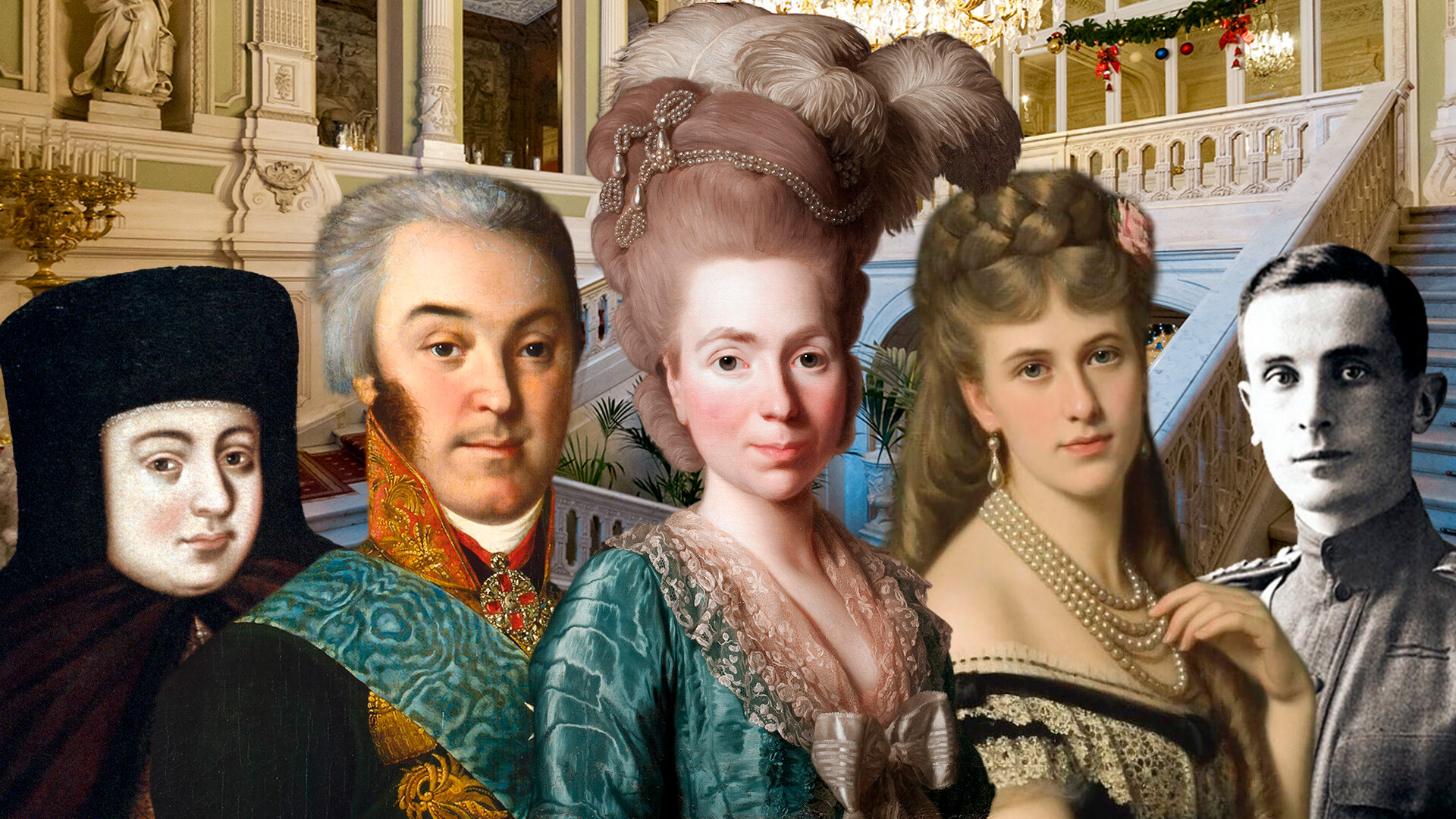
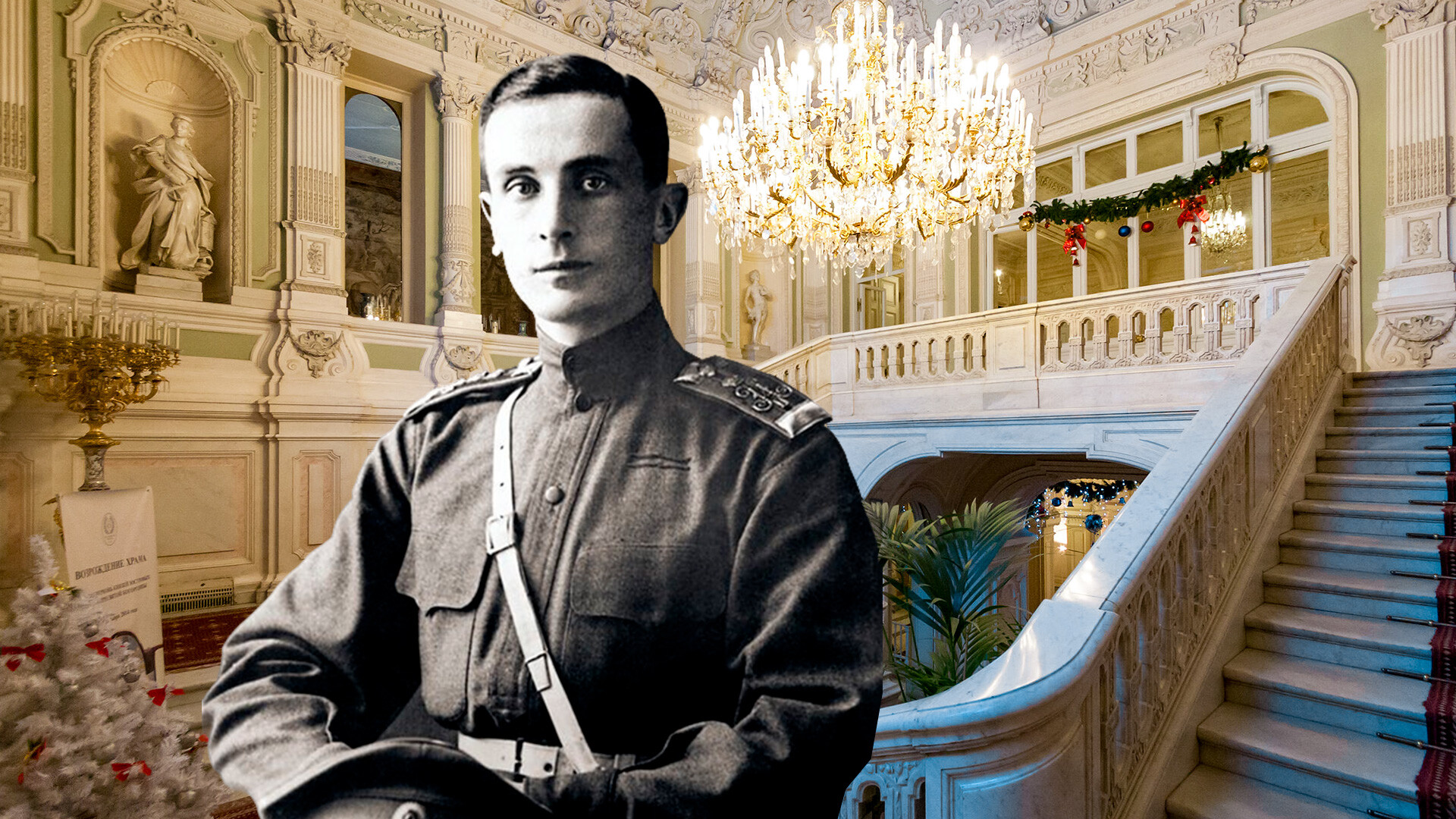
Felix Yusupov and Yusupov's Palace in St. Petersburg
Public domain; IzoeKriv (CC BY-SA 4.0)This princely family was the richest in Russia. Their fortune was almost more than that of the emperor himself, owning fabulous palaces in St. Petersburg and beyond. The Yusupovs came from the Mongols. Their ancestor was, Yusuf, the Nogai ruler of the 16th century, who ruled over one of the Khanate, a splinter of the Golden Horde. Yusuf was planning to wage a big campaign against Moscow, but his younger brother supported rapprochement with Russia. Having killed Yusuf, he concluded an alliance with Moscow and Yusuf's sons went to serve Russian Tsar Ivan the Terrible.
They were granted considerable lands and noble titles. The Yusupovs later faithfully served Peter the Great and other emperors and were prominent statesmen. One of the most famous Yusupovs was Nikolai Borisovich, a diplomat, art collector and director of the Hermitage Museum in St. Petersburg.
But more famous than the rest was Felix Yusupov, one of Grigory Rasputin’s killers. He even married into the Romanovs, bewedding Irina Alexandrovna, a princess of imperial blood.
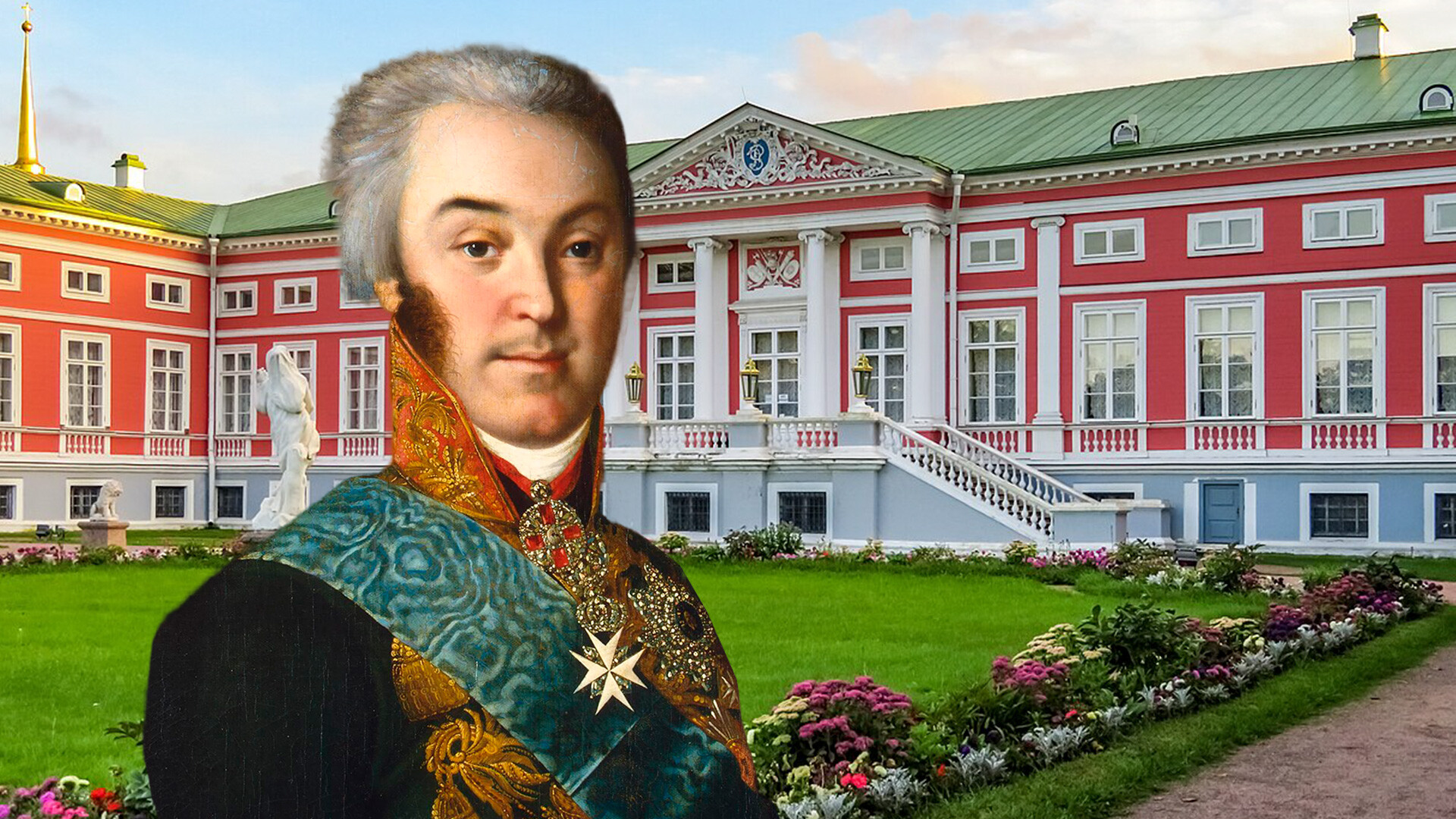
Nikolai Sheremetev and his Kuskovo estate
Nikolai Argunov; Nikoniko962 (CC BY-SA 4.0)Moscow's Sheremetyevo Airport was named precisely in honor of his count family, because it is located on the former territory the Sheremetevs, count Sergei Dmitrievich (1844-1918), if to be more precise.
The Sheremetevs were an old boyar family and they even had an ancestor with the Romanovs, boyar Andrey Kobyla, who served under Prince Ivan I Kalita in the 14th century. The Sheremetevs always occupied important state posts and were members of the Boyar Duma. Under Peter the Great, Boris Petrovich Sheremetev (1652-1719) became the first to whom the title of count was granted.
Count Nikolai Petrovich (1751-1809) also became famous. He owned vast lands, including the Kuskovo and Ostankino estates in Moscow, built by his father. He was one of the richest men in the empire and a patron of the arts. He also became famous for marrying his serf, the actress Praskovya Zhemchugova. To conclude this unequal marriage, he asked permission from the emperor. His serfs became prominent architects and artists, all because he looked out for talents and paid for their studies.
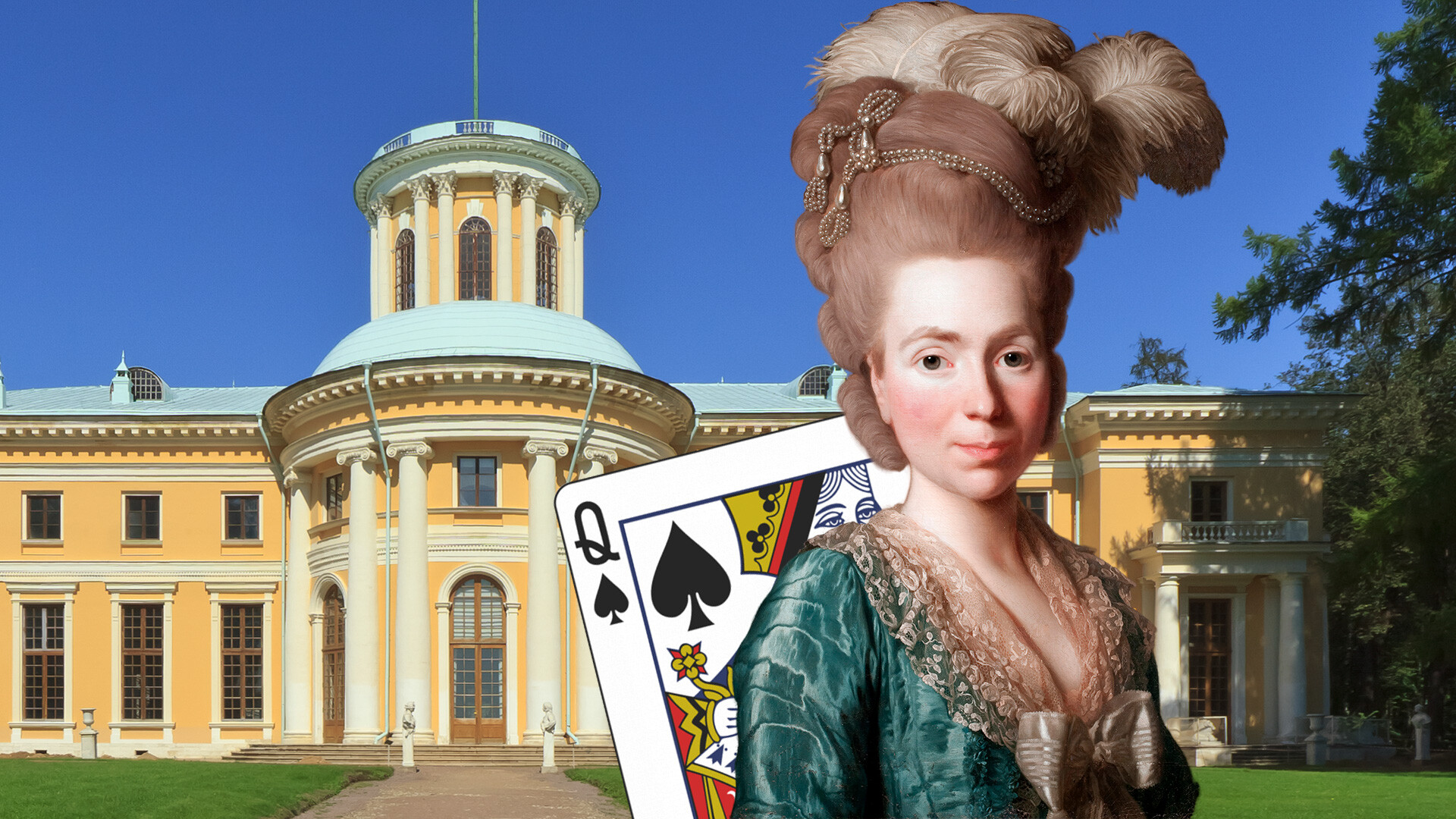
Natalya Golitsyna and Arkhangelskoye estate
Alexander Roslin; A.SavinIn the 19th century, they joked that out of ten people walking along Nevsky Prospekt in St. Petersburg, there was always at least one Prince Golitsyn. It was, indeed, the largest of the Russian noble families. Back in the 16th century, it divided into four extensive branches, each of which expanded incredibly.
The princely family of Golitsyns descend from the Lithuanian Grand Duke Gedimin, who lived in the 14th century. The last name first appeared as a nickname: Mikhail Bulgakov-Golitsa was a boyar under Russian Grand Duke Vasily III (all because he wore 'golitsa', a gauntlet, on his left hand).
The Golitsyns owned vast lands in Moscow and its surroundings: Arkhangelskoye, Bolshiye and Malye Vyazemy, Kuzminki and other estates all belonged to them.
The princes were close to many tsars and served as military commanders under Ivan the Terrible. One Golitsyn was even a favorite of Princess Sophia, sister of Peter the Great. During the ‘Time of Troubles’ in the early 17th century, Andrei Vasilyevich Golitsyn was a member of the ‘Semiboyarshchina’ and, in fact, was among those who ruled the country for some time.
The women of the family also became famous. For example, Natalia Petrovna Golitsina (1741-1837) was a maid of honor at the court of four emperors and became the prototype of Pushkin's ‘Queen of Spades’.
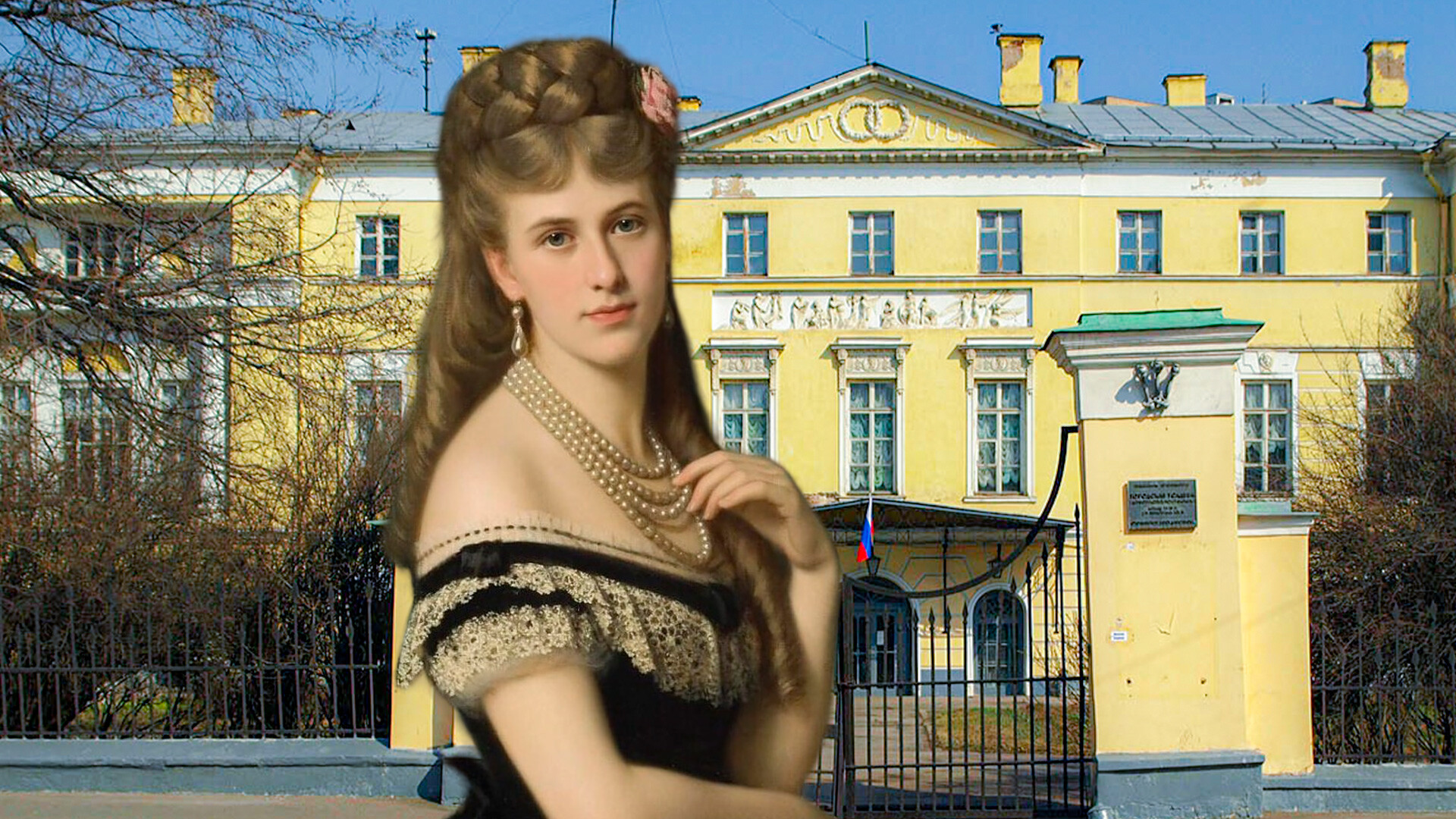
Maria Dolgorukova (wife of Alexander II) and the Dolgorukov-Bobrinskiy Estate in Moscow
Michele Gordigiani; NVO (CC BY-SA 4.0)The Princes Dolgorukovs are descended from Prince Rurik himself, the founder of the Russian state and its first ruler. Thus, they have no relation to the founder of Moscow, Grand Duke Yury Dolgoruky.
The ancestor of the family was 15th century Prince Ivan Obolensky, a descendant of Rurik. It was him who received the nickname ‘Dolgoruky’ (literally translated as “long-armed”) for his vindictiveness and for his ability to get his enemies one way or another, wherever they were hiding. Although many princes went down in history as ‘Dolgoruky’ (as an adjective), it is correct to write the last name ‘Dolgorukov’.
Many representatives of the family were in the highest echelons of power and held some of the most important government positions. Maria Dolgorukova was the wife of Mikhail Fedorovich, the first tsar of the Romanov family. However, she died before giving birth to children. In the 18th century, the family once again almost united with the Romanovs: Princess Catherine Dolgorukova was the bride of Peter II, but the young emperor died before the marriage. And, in fact, during his reign, it was the Dolgorukovs who actually ruled the country. Maria Dolgorukova was also the morganatic (‘left-handed’) wife of Emperor Alexander II.

Natalya Naryshkina (Peter the Great's mother) and the Church of the Intercession in Fili, Moscow
Public domain; Legion MediaThe ancestor of this ancient noble family is of Tatar origin is, perhaps, the Crimean Tatar nicknamed Narysh, who served as a court officer under Grand Duke Ivan III.
Until the end of the 17th century, the family was not considered too important, owning relatively small lands. But, when Tsar Alexei Mikhailovich married Natalia Naryshkina, the family rose incredibly high and many representatives were elevated to boyar rank. Natalia was the mother of Peter the Great and, later, the Naryshkins would always be present at the court of the Romanovs.
The Naryshkins, however, never became counts or princes. They were offered various titles several times, but none of them suited the relatives of Peter the Great.
The Naryshkins also owned large estates in Moscow and their family name has entered history also thanks to the ‘Naryshkin Baroque’ architectural style, in which many churches of the late 17th - early 18th century were built. One of the first was the Church of the Intercession in Fili District, on one of Naryshkins' estates.
Dear readers,
Our website and social media accounts are under threat of being restricted or banned, due to the current circumstances. So, to keep up with our latest content, simply do the following:
If using any of Russia Beyond's content, partly or in full, always provide an active hyperlink to the original material.
Subscribe
to our newsletter!
Get the week's best stories straight to your inbox